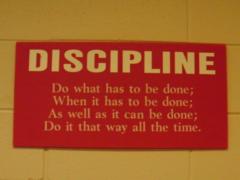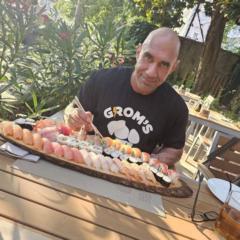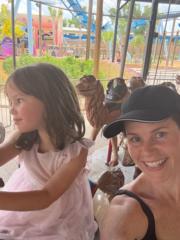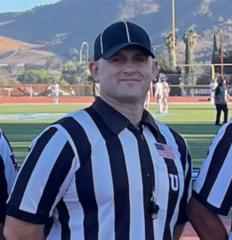Aug 13 • Training & Performance
Unlock 90% More Strength Without Lifting Heavier: The Neurological Secret Your Workouts Miss
Strength neurology shows that most people have been training only a fraction of their true strength potential. Traditional strength programs, even advanced ones, mainly target about 10% of the brain’s control over force production. The other 90%, which comes from reflexive, automatic tone in the muscles, is rarely trained. There are two main pathways to voluntary strength. The first is increased neural drive, the conscious pathway where the motor cortex sends signals down the spinal cord to make muscles contract. This can be trained through heavy lifting, explosive training, and practicing specific movement patterns. The second is improved reflexive tone, the unconscious pathway that provides background activation of muscles through reflexes, balance systems, and postural control. This pathway is regulated by deep brain and brainstem structures, especially the cerebellum and the pontomedullary reticular formation (PMRF), and is responsible for about 90% of strength output. Reflexive tone stabilizes joints, optimizes posture, and sets the starting tension that allows muscles to produce force quickly and efficiently. When reflexive tone is optimized, motor units are already partially activated, neural recruitment is faster and more synchronized, and less energy is wasted. When tone is poor, stability suffers, force output is limited, and performance feels inconsistent. The brain’s cortex sends about 10% of its output directly to voluntary movement, while 90% goes through the cerebellum and PMRF to regulate axial (core and postural) muscle tone. The PMRF processes sensory input from mechanoreceptors and adjusts tone accordingly, meaning that poor tuning here undermines stability and strength. Most strength programs improve the 10% pathway but don’t directly train reflexive tone, which is like upgrading the software on your phone without fixing the operating system. Accessing the reflexive tone system requires drills that give high-quality sensory input to the cerebellum and PMRF. Visual system drills like eye tracking and gaze stabilization refine visual-vestibular integration. Vestibular activation through head tilts, rotations, and balance work stimulates key tone-control pathways. Proprioceptive training like joint position matching and perturbation drills improves joint and muscle feedback. Cross-lateral integration drills like crawling patterns enhance communication between brain hemispheres. Voluntary drive is like the horsepower of a race car, while reflexive tone is like the suspension system. Without a good suspension, you can’t use all the power effectively. Improving reflexive tone pre-activates stabilizers, makes movements more efficient, and can lead to rapid strength gains even without increasing load. To maximize strength, you should keep training the 10% pathway with heavy and explosive lifts but also unlock the 90% pathway by targeting the cerebellum and PMRF with sensory-rich drills. Integrating these into warm-ups and accessory work primes the nervous system so that both systems work together, turning your body from a tuned street car into a high-performance race machine.
Here’s an example of a 4-phase, 8-week “90% Pathway” Integration Protocol you can plug directly into an existing strength program. It focuses on improving reflexive tone by systematically training the cerebellum, vestibular system, and proprioceptive pathways while keeping your main lifts intact. You’ll be layering these drills into warm-ups, between sets, and cool-downs so they enhance not replace your regular strength work.
Phase 1 – Sensory System Calibration (Weeks 1–2)
Goal: Clean up input to the cerebellum and PMRF by calibrating vision, balance, and proprioception.Why first? You can’t optimize reflexive tone if the incoming sensory data is “noisy.” This is like making sure your GPS has a strong signal before you start driving.
Weekly Structure:
*Main Lifts: Keep your current strength plan as-is.
*Before Each Session:
Daily Micro-Dose: 3 minutes of these drills even on non-training days to accelerate adaptation.
Phase 2 – Reflexive Tone Activation (Weeks 3–4)
Goal: Increase baseline axial muscle tone and pre-activation of stabilizers.Why now? With clean input, the nervous system can better recruit postural and stabilizing muscles before you even initiate a lift.
Weekly Structure:
*Main Lifts: No change, but start pairing heavy lifts with “tone primers.”
*Before Each Session:
*Between Sets of Main Lifts:
Phase 3 – Dynamic Integration (Weeks 5–6)
Goal: Merge reflexive tone with fast, coordinated movement patterns.Why now? Stability should now be automatic, so we start layering in speed, load, and complexity to make tone adaptive under stress.
Weekly Structure:
*Main Lifts: Same core lifts, but reduce accessory volume slightly to allow for neural work.
*Before Each Session:
*Between Sets of Main Lifts:
Phase 4 – Complex Load Challenge (Weeks 7–8)
Goal: Ensure reflexive tone holds under maximal voluntary drive and environmental unpredictability.Why now? The nervous system has built a robust baseline; now it needs stress-testing.
Weekly Structure:
*Main Lifts: Maintain intensity; reduce volume slightly on heavy days.
*Before Each Session:
*Between Sets of Main Lifts:
Integration Notes:
*Perform reflexive tone drills before heavy lifts to prime stability and recruitment.
*Keep neural drills short and crisp—fatigue in these circuits will blunt the effect.
*Retest baseline strength and movement quality after 8 weeks; most people report surprising improvements in stability, force expression, and coordination.
13
12 comments
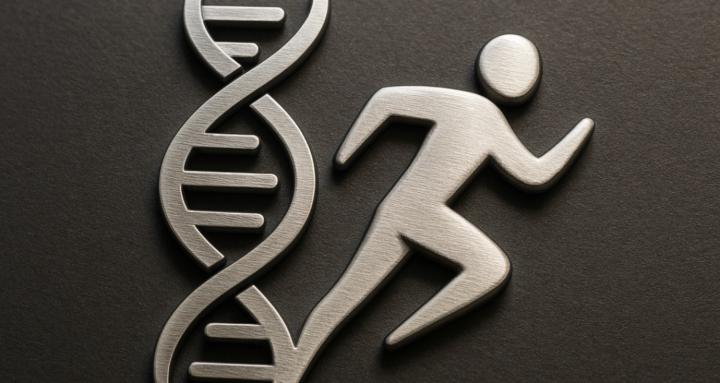
skool.com/castore-built-to-adapt-7414
Where science meets results. Learn peptides, training, recovery & more. No ego, no fluff—just smarter bodies, better minds, built to adapt.
Powered by

